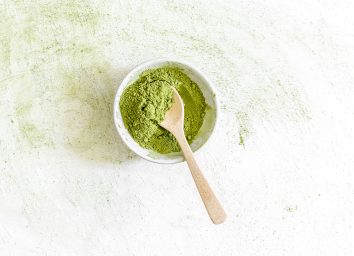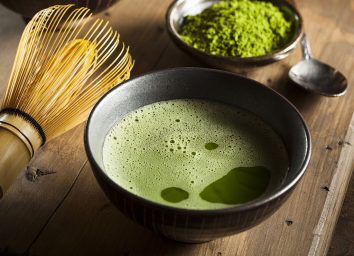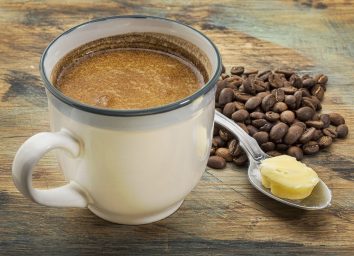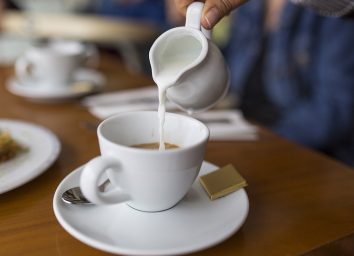How Is Matcha Energy Different from Coffee?
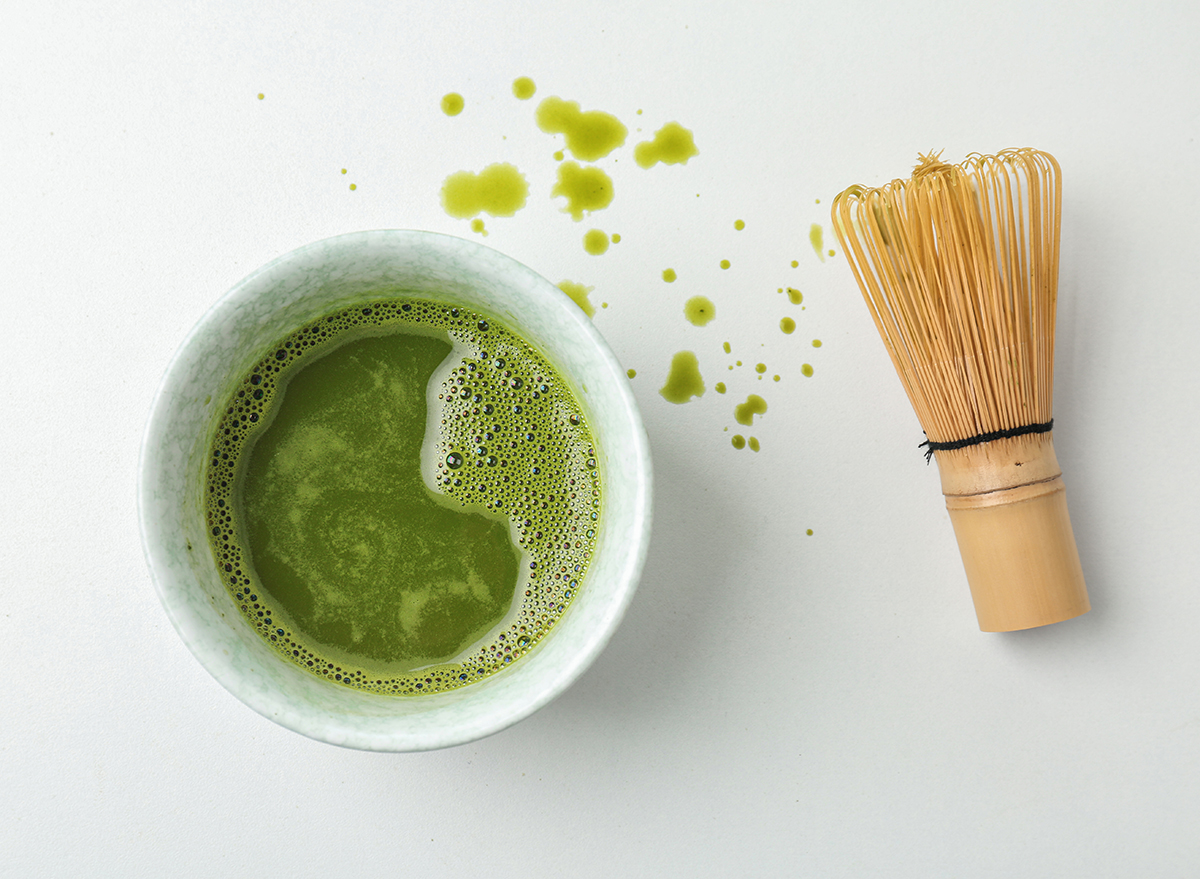
Matcha sure does look great on social media, but there’s more to matcha than its photogenic green hue. Matcha isn’t your average cup of green tea; it’s a caffeinated gem that benefits both your mind and body by delivering a significant amount of bacteria-fighting antioxidants and highly concentrated nutrients in every serving.
But how does a cup of matcha compare to your morning cup of joe? Let us count the ways. Here, Lindsey Kane, RD and Director of Nutrition at Sun Basket, and MatchaBar founders Max and Graham Fortgang spill the tea on all things matcha. Because while this drink is green with energy, it’s unlike any pick-me-up you’ve ever tried.
What is matcha?
Matcha can be defined by two key elements: How it’s harvested, and how it’s consumed. Unlike most of the plants tea leaves are derived from, matcha tea bushes are grown in areas covered from sunlight. This delays photosynthesis (the process in which plants convert light energy into chemical energy), and slows the growth of the plant, “yielding more intensely green-hued leaves, thanks to a higher concentration of chlorophyll,” Kane explains. She explains that the smallest, youngest leaves are harvested by hand, the stems and veins are removed, and the leaves are steamed to prevent oxidation. This locks in all their natural flavor and nutrients.
While most green tea leaves are steeped in water then strained—so that only the remaining infused water is consumed—matcha tea leaves, in their powdered form, are whisked into the water and ingested.
“Because of this, you score a much more concentrated dose of nutrients through a matcha latte than say a traditionally steeped cup of green tea,” Kane says. “The nutritional content is estimated to be nearly 10 times greater than traditionally steeped green tea. Plus, the tea transforms into a foamy, frothy texture, offering a lot more ‘body’ to your beverage than your regular old cup of tea,” she adds.
What does matcha look and taste like?
An entity all its own, matcha doesn’t come in canisters of loose leaf, or tied up in individual sachets. In fact, the word “matcha” means “powdered tea,” a nod to the “ultra-fine stone-ground milling process” that yields a delicate, green powder, Kane says. However, not all matcha is created equally, and you can decipher between high- and low-quality matcha simply by examining the look and feel of the powder itself.
For example, high-quality matcha is bright green, smooth, not bitter, and slightly sweet. Lower-quality matcha looks grainy in texture and has a yellow tinge to its hue. “It also tends to taste much more bitter, and this is all due to a less stringent tea leaf-selecting process that results in stems, veins, and tougher leaves getting captured and pulverized into the final product,” Kane says.
What are the health benefits of drinking matcha?
Not only is matcha incredibly photogenic (the hashtag yields over 4.4 million results on Instagram alone), the tea boasts some serious health benefits as well. For starters, in terms of your physical wellness, Kane says regularly weaving matcha into your diet can promote a healthy heart, as it helps to reduce your body’s “bad” LDL cholesterol levels in order to increase its “good” HDL cholesterol. What’s more, matcha contains a slew of antioxidants, including EGCG, which works to ward off cancerous properties. Antioxidants also reduce inflammation, fight bacterial, viral, and fungal infections, all while promoting brain health.
Matcha boasts some pretty significant mental health perks, too. Contrary to the caffeinated buzz from, say, coffee, or an energy drink that makes you jittery, matcha energy comes on gently and promotes a sharp sense of calm focus. Kane explains that this is likely due to matcha’s unique balance of L-theanine, an amino acid that functions as a neurotransmitter to trigger a release of theophylline, a slow, steady stream of tranquil, caffeinated energy.
“This unique sense of “relaxed alertness” is why Buddhist monks are naturally drawn to matcha,” Kane says. “It supports their practice of ‘calm concentration’ during meditation sessions.”
How does matcha energy compare to the energy in coffee and other energy drinks?
Max and Graham Fortgang, brothers and co-founders of the matcha energy drink company MatchaBar, explain that matcha caffeine can take more than three to four hours to be distributed throughout the body. Because matcha is a finely ground green tea powder, the consumer is actually drinking the matcha leaves—unlike straining them in a normal green tea. The caffeine process is much slower than something like a cold brew, where the caffeine hits all at once.
What’s more, because matcha is high in antioxidants (specifically L-theanine), brain functionality gradually increases. In other words, caffeine is consumed slowly, which negates the feeling of a crash or experiencing jitters as you might from other sources, the Fortgangs explain. Plus, matcha is an alkaline; coffee is an acid. Therefore, matcha is much easier to digest and less likely to cause an upset stomach.
What is the best time of day to drink matcha?
The Fortgangs suggest drinking matcha anytime you’d normally reach for another source of caffeine. They suggest if you’re sensitive to caffeine in general, matcha will be more gentle. However, if having a coffee past 5 p.m. keeps you up, matcha will likely do the same.
